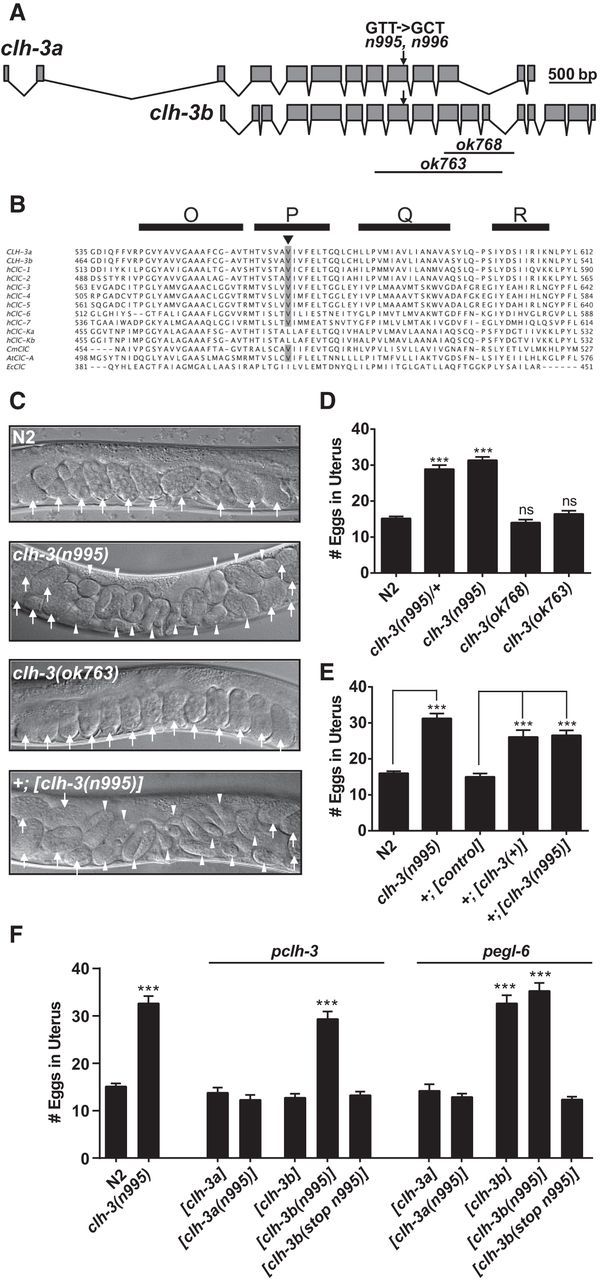Figure 1.

The n995 mutation is a gain-of-function mutation in clh-3. A, Gene structure of the clh-3 locus. clh-3 encodes two isoforms; the a isoform is shown on top and the b isoform on bottom. The n995/n996 mutation is a T to C substitution resulting in a V566A substitution in CLH-3a and a V495A substitution in CLH-3b. B, Alignment of membrane embedded α-helices O–R of CLH-3a and CLH-3b with human (h), Cyanidioschyzon merolae (Cm), Arabidopsis thaliana (At), and Escherichia coli (Ec) CLC proteins. The n995 mutation substitutes an alanine for a highly conserved valine residue (highlighted) in the P-helix. C, DIC images of young adult worms all at the same age. Arrows indicate embryos; arrowheads indicate late-stage embryos (>400 cells). clh-3(n995) mutants and wild-type animals overexpressing clh-3(n995) engage in egg laying less frequently than the wild-type, which leads to the accumulation of twice as many eggs as the wild-type and clh-3(ok763) mutants, many of which reach >400 cells before they are laid. D–F, Quantification of number of eggs retained in the uterus of adults. Bars represent the means ± SEM. ***p < 0.001 compared with N2 or as indicated; n>36 for each genotype or as indicated. D, clh-3(n995) is a dominant mutation that leads to the accumulation of eggs. E, Overexpression of both wild-type and mutant clh-3 leads to the accumulation of eggs. F, Expression of the clh-3b isoform, but not the clh-3a isoform, in the HSN leads to the accumulation of eggs. Introducing a stop codon early in the clh-3b coding sequence abrogates the effect, indicating that it is dependent on production of the CLH-3b protein. More than 10 independent transgenic lines were examined for each construct and one representative line is shown. n = > 24 for each transgenic line.
